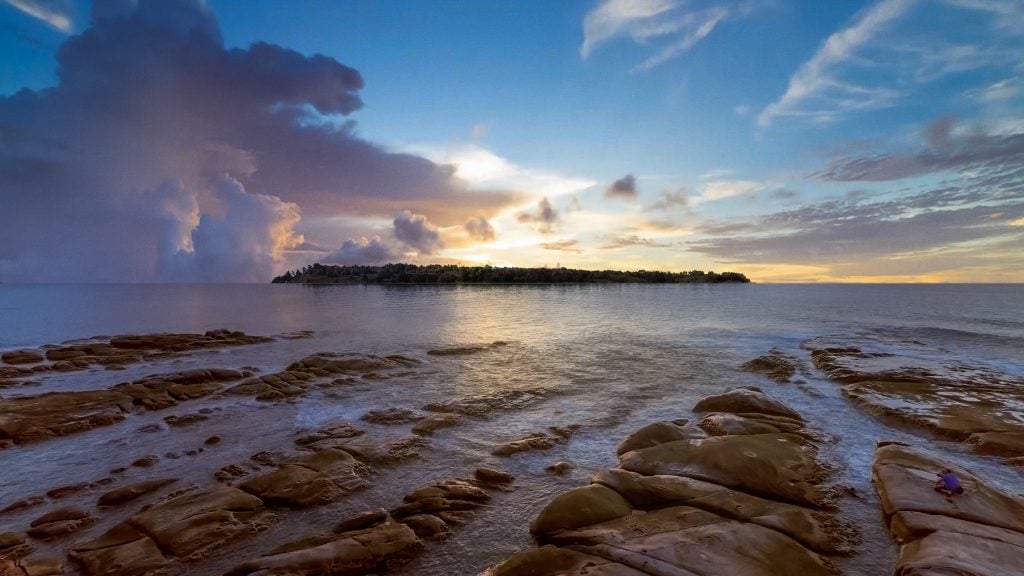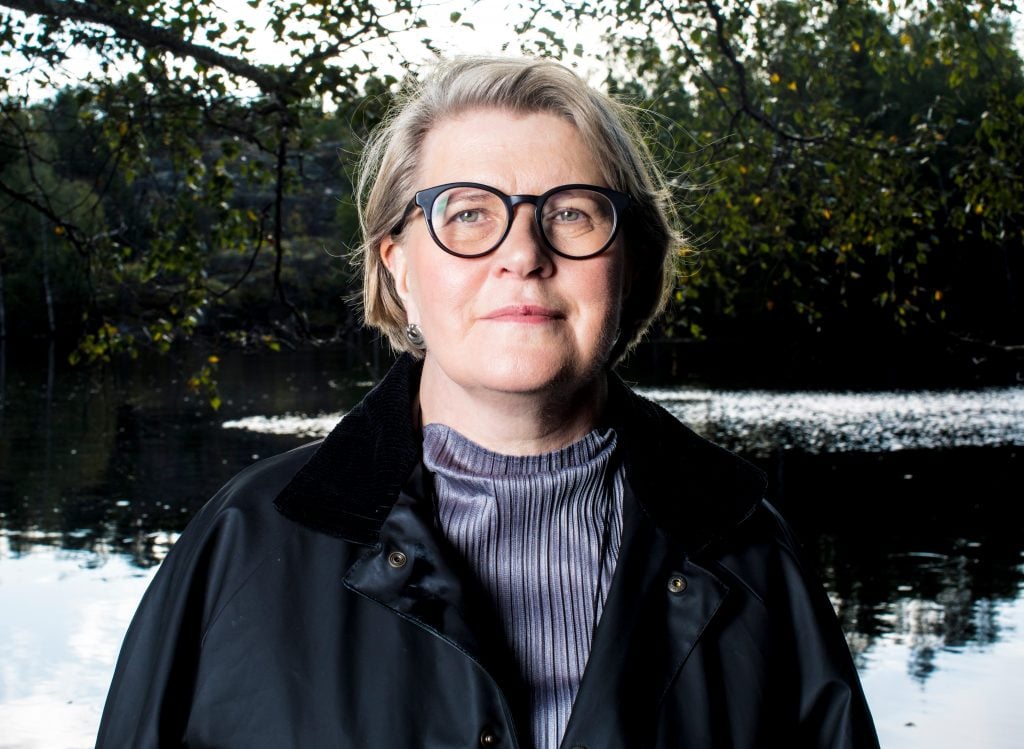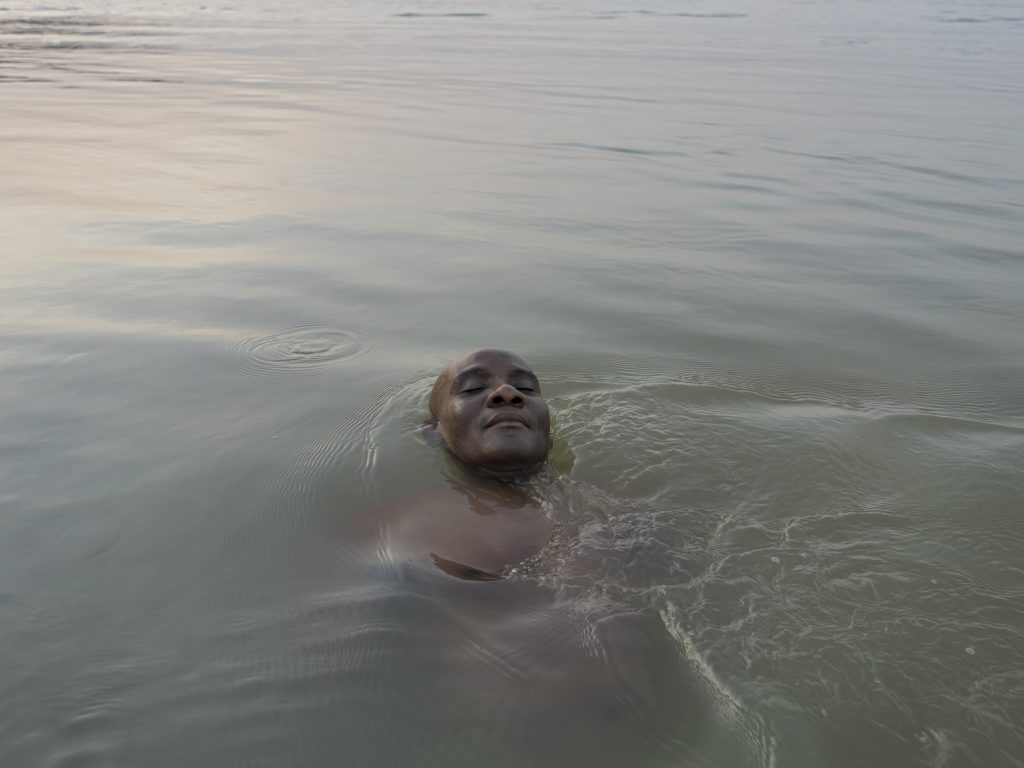Sustainability
Art Biennials Are Carbon Catastrophes. Here’s How the Inaugural Helsinki Biennial Is Being Designed as a Climate Neutral Event
The director of the inaugural Helsinki Biennial sets out her model for a more sustainable art world.

The director of the inaugural Helsinki Biennial sets out her model for a more sustainable art world.

Maija Tanninen-Mattila

A recent count on the Biennial Foundation’s directory listed over 270 cities that host their own bi-yearly art event. That’s 270 cities around the world that become packed full of international art goers, armed with a cascade of tote bags, piles of printed exhibition material, and ever-increasing flight miles. It’s not hard to imagine the environmental toll these internationally sprawling shows can take.
Artists have embraced the topic of climate change for decades, with museums and galleries often exploring this theme in their exhibition programs too, but putting this urgent topic into real motion—beyond the conceptual—can be daunting. Yet with the tools now available to allow organizations to track and improve their carbon footprint, the art world can and must begin to tackle its own excesses.
As the director of both the Helsinki Art Museum and the inaugural Helsinki Biennial in Finland, which opens this June, I am aware that my work is at the core of decision-making processes that can help or hinder sustainable working processes. But changing those alone is, still, not enough. We must transform the culture around art exhibitions so that environmental issues are not just an add-on, but are rather embedded in all of our everyday working practices, touching everyone within an arts organization. We have an obligation to act responsibly, and when working on a much larger scale, such as a biennial, these processes become even more important.

Helsinki Biennial director Maija Tanninen-Mattila. Courtesy Helsinki Biennial. Photo: Matti Pyykkö.
Each biennial reflects and shapes the place which hosts it. Committed to taking responsibility for mitigating climate change, Helsinki has pledged to become carbon neutral by 2035 and is already making ambitious steps to do so. The new Helsinki Biennial is working to meet our city in stride.
We Finns have an innate cultural affinity with nature and with the sea—our Nordic country is densely forested, with 328 islands in the archipelago off the coast of Helsinki alone. The new Helsinki Biennial hopes to open up the archipelago, formerly largely off limits for military use, for residents and international visitors alike.
Producing a biennial with over 40 artists and artist groups on one of these islands—the exhibition takes place on the ecologically splendid island of Vallisaari—required that we put our responsibility towards sustainability at the definitive center of our planning. Here, the biennial spans just 20 percent of the land and artworks are placed along pre-existing paths. We are working closely with local organizations to ensure that the rich heritage and remarkable biodiversity are not compromised.

Uwa Iduozee, from the series They Walked on Water (2018). Courtesy the artist.
And while a biennial must respond to the uniqueness of its location, when it comes to sustainability, there are clear processes that can and should be applied anywhere at any art event. For example, we are using the world’s first carbon footprint calculator tailored for non-governmental organizations, which can measure carbon emissions across the categories of waste, purchases, energy consumption, logistics, and mobility.
This tool could be applied to not just other biennials around the world, but to museums or art galleries, as everything we do generates some form of emission. Within our biennial team, when a meeting or visit cannot be replaced by a Zoom call, our team logs the data and fuel consumption of each journey in a centralized document—be it a ferry, flight, or bus—to help define our future goal for one day making the biennial a carbon neutral event.
We also created the position on our team of an environmental coordinator, a role we hope one day each biennial, museum, or art institution will have. Their duties involve, but are not limited to, planning and implementing sustainable practices (as well as tracking existing or new ones within the art world), highlighting environmental issues, and measuring our progress. Our coordinator engaged a bespoke Environmental Management System called EcoCompass, which surveyed what the biennial was already doing for the environment—and what it was not.
We listened: since coming on board in 2019, EcoCompass has directed our entire production and infrastructure, such that when we open the biennial this June, all of our staff—from the curators to the exhibition invigilators —will have been trained in environmental awareness. For instance, our exhibition attendants on Vallisaari will use recycled and upcycled bicycles and are required to inform us should they notice any erosion on the island, and our communications team will avoid distributing any unnecessary printed material. We are also working closely with local businesses to ensure our waste is biodegradable and managed as ecologically as possible.
And even still, an art event must also think beyond the confines of exhibition-making itself. What about the visitors? As part of Helsinki’s Think Sustainably service, we are promoting sustainable tourism by the visitors, local and international, to help them make informed choices while at the biennial and in Helsinki—including where to stay, eat, shop, and how to travel sustainably.
The hope of any encounter with artistic practices is that it alters, expands, and challenges our habitual understanding of our world. By making the natural world both the frame and the context for viewing works of art, we cannot escape confronting essential environmental and ecological questions. Working within the challenges and constrictions of the natural environment, we aim to model a new synergy between those questions that art asks of us and the solutions we must seek in order to protect the world art inhabits.
Maija Tanninen-Mattila is director of the Helsinki Art Museum and director of the inaugural Helsinki Biennial 2021, “The Same Sea,” which will be held on the Helsinki Archipelago, Vallisaari island, from June 12 through 26 September, 2021.